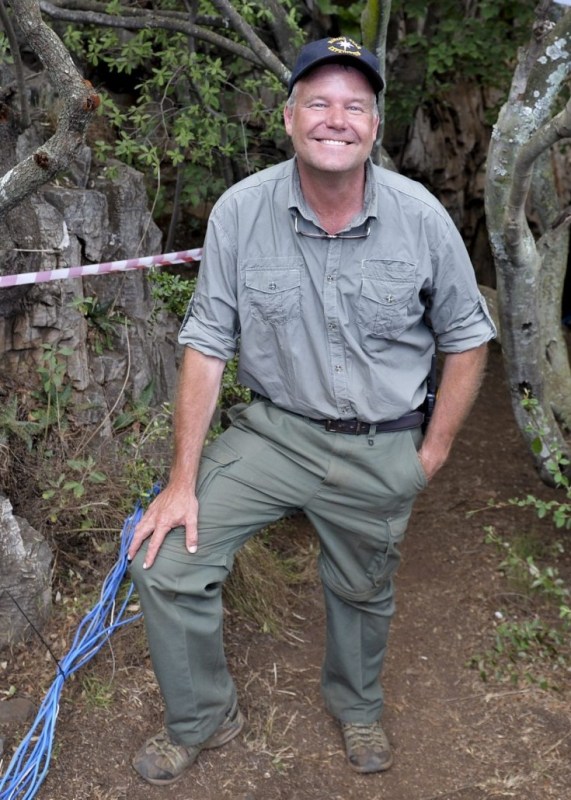
Professor Lee Berger kisses a replica of the skull of a Homo Naledi , a newly discovered human ancestor during the unveiling of the discovery on September 10, 2015, in Maropeng. (Stefan Heunis/AFP/Getty Images)
AFP/Getty Images
At 50, Lee Berger might as well be in the paleoanthropological Hall of Fame: He’s discovered two ancestral humans—Australopithecus sediba and homo naledi—in addition to numerous other significant findings. He gives hundreds of lectures a year, and makes numerous appearances on National Geographic programs. It’s an unusual level of fame for a paleoanthropologist—one that has made Berger the target of critics, some of whom seek to discredit his findings.

The ‘Sediba Fossil’, the remains of a hominin discovered by Professor Lee Berger, an American who is a professor at South Africa’s University of the Witwatersrand, are displayed during its unveiling in Johannesburg, on September 8, 2011. (Alexander Joe/AFP/Getty Images)
AFP/Getty Images
One of Berger’s earliest discoveries—that of dwarf-like fossils in Palau in 2006—was widely disputed. And with each new discovery, more critics seem to come out of the woodwork, many saying he’s overstated the significance of his findings. The New Yorker‘s Paige Williams, who profiled Berger for the magazine, notes that “[The] field [is] split, largely between those who consider Berger a visionary for sharing data and those who consider him a hype artist.”
Is this genuine criticism or jealousy? (Paleoanthropology has been described as “a swamp of ego, paranoia, possessiveness, and intellectual mercantilism.”) To find out more, read the full story here. See images of Berger’s findings below.

Professor Lee Berger directs excavations in the Rising Star cave in South Africa during excavations to recover bones of a new hominid species, Homo Naledi. (University Of The Witwatersrand/Barcroft Media/Getty Images)
Barcroft Media via Getty Images

Professor Lee Berger directs excavations in the Rising Star cave in South Africa during excavations to recover bones of a new hominid species, Homo Naledi. (University Of The Witwatersrand/Barcroft Media/Getty Images)
Barcroft Media via Getty Images

Professor Lee Berger, an American who is a professor at South Africa’s University of the Witwatersrand, poses with the reconstructed hand of a hominin he discovered, during the unveiling of this Sediba Fossil in Johannesburg, on September 8, 2011. (Alexander Joe/AFP/Getty Images)
AFP/Getty Images
This article was featured in the InsideHook newsletter. Sign up now.





























